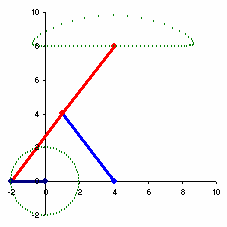

CAD/CAM.—
CAD in engineering means
computer-aided design using a computer graphics system to develop mechanical, electrical / electronic, and architectural designs. A second D (CADD) is sometimes added (
computer-aided drafting and design) and simply indicates a mechanical drafting or drawing program.
CAD technology is the foundation for a wide variety of engineering, design, drafting, analysis, and manufacturing activities. Often a set of drawings initially developed in the design phase of a project is also used for analyzing and optimizing the design, creating mechanical drawings of parts and assemblies and for generating NC/CNC part programs that control machining operations.
Formerly, after a component had been designed with CAD, the design was passed to a part programmer who developed a program for machining the components, either manually or directly on the computer (graphic) screen, but the process often required redefining and reentering part geometry. This procedure is often regarded as the CAM part of CAD/CAM, although
CAM (for
computer-aided manufacturing) has a much broader meaning and involves the computer in many other manufacturing activities such as factory simulation and planning analyses. Improvements in the speed and capability of computers, operating systems, and programs (including, but not limited to CAD) have simplified the process of integrating the manufacturing process and passing drawings (revised, modified, and translated, as necessary) through the
design, analysis, simulation, and manufacturing stages.


A CAD drawing is a graphic representation of part geometry data stored in a drawing database file. The drawing database generally contains the complete list of entity (line, arc, etc.) and coordinate information required to build the CAD drawing, and additional information that may be required to define solid surfaces and other model characteristics. The format of data in a drawing file depends on the CAD program used to create the file. Generally, drawings are not directly interchangeable between drawing programs, however, drawings created in one system can usually be translated into an intermediate format or file type, such as
DXF, that allows some of the drawing information to be exchanged between different programs. Translation frequently results in some loss of detail or loss of other drawing information because the various drawing programs do not all have the same features. The section Drawing Exchange Standards covers some of the available methods of transferring drawing data between different CAD programs.






Comments